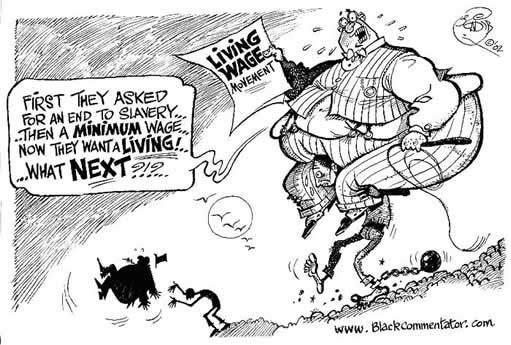By Justin Wolfers, The New York Times, March 13, 2015
The Wall Street bonus pool for last year is roughly double the total earnings of all Americans who work full time at the federal minimum wage.
That claim, which comes from a new report from Sarah Anderson of the Institute for Policy Studies, is one of the more striking sound bites I have heard in quite some time. And so I thought it worth digging in to the data to see if it checks out. Short answer: It does, although given the uncertainty in these sorts of calculations, the precise ratio could easily be a bit higher or lower.
Let’s start with the Wall Street bonuses. The New York State Comptroller reported on Wednesday that the size of the bonus pool paid to securities industries employees in New York City was $28.5 billion. Dividing this total among 167,800 workers yields an average bonus of $172,860, which seems plausible enough. For sure, some received much, much bigger bonuses, and many received nothing.
What about the total earnings of full-time workers at the federal minimum wage? The Bureau of Labor Statistics reports that there are 1.03 million full-time workers paid an hourly wage of $7.25 or less. These people tend to work around 40 hours a week on average. If they all earn $7.25 per hour and work 50 weeks per year, the total earnings of this group come to nearly $15 billion. Ms. Anderson, whose report usefully shows all her work, prefers an estimate of 37 hours per week — which looks too low to me based on other data — and 52 weeks per year, so after rounding, she gets to a total of $14 billion.
Rather than quibble over which number is correct, it makes more sense to highlight the more important uncertainties surrounding any estimate. The count of workers at federal minimum wage includes only those who are paid hourly, and so omits those paid weekly or monthly. On the flip side, the B.L.S. count is based on income before tips and commissions, and so may overstate the number of people with low hourly earnings. And while my calculation assumed that all minimum wage workers earn $7.25 per hour, in fact many earn less than this, including wait staff and others who rely on tips, some students and young workers, certain farmworkers, and those whose bosses simply flout the minimum wage law.
For all of these uncertainties, the broad picture doesn’t change. My judgment is that we can be pretty confident that Ms. Anderson’s estimate that the sum of Wall Street bonuses is roughly twice the total amount paid to all full-time workers paid minimum wage seems like a fair characterization.
Justin Wolfers is a senior fellow at the Peterson Institute for International Economics and professor of economics and public policy at the University of Michigan.

No comments:
Post a Comment